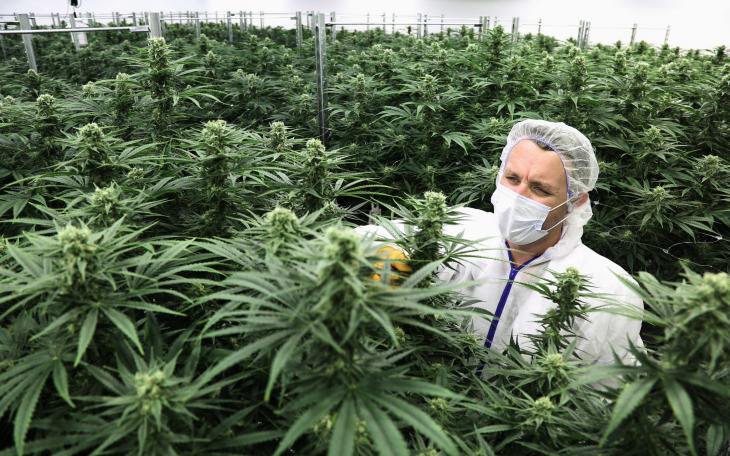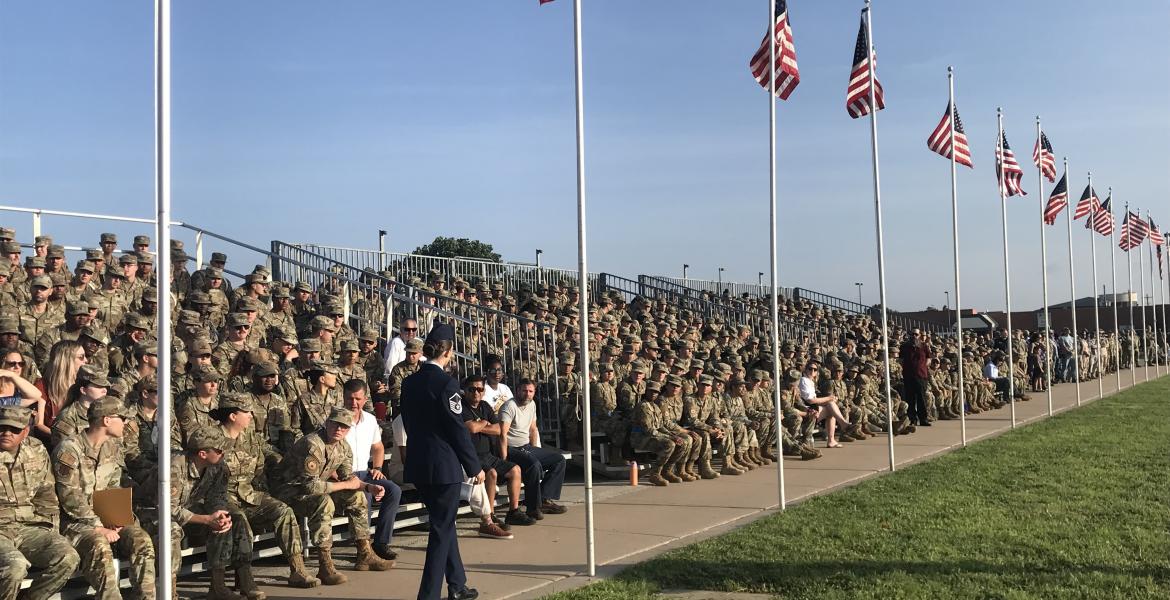In August 2015, San Angelo City Council members and citizens had visited with Raftelis Financial Consultants Inc. and the San Angelo Water Advisory Board to discuss a long-term plan to fix a long-term problem, and that problem is the commodity of water.
Based on a Water and Water Reclamation Cost of Service and Rate Design Study results, the members from RFC Inc. suggested COSA raise its rates to deal with the many problems plaguing the water utility system.
Rick Giardina, executive vice president of RFC, presented a recommendation to the council to increase the rates beginning in 2016, and presented different increase scenarios. Because of some concerns about the impact the increase would have on the citizens, city council members and members of WAB recommended some changes to be made.
Tuesday morning, almost three months after this meeting, Water Utilities Director Bill Riley presented a revised water and water reclamation rate increase plan as recommended by the Water Advisory Board to city council members during the City Council Agenda meeting at the McNease Convention Center, 501 Rio Concho Drive. Rates are expected to increase by 54.5 percent for the average water and wastewater city customer by year 2020.
“I do want to share with you the changes that have been made since the last meeting and the recommendations that you had proposed, and what we have done to lessen the impact of the rates,” Riley said.
He also said his hope is to begin implementing the proposed increases in January of 2016, but the council members said more has to be done to educate the public before that can happen.
For Education Purposes, Here’s a Brief Recap of the Challenges
In August, Giardina said our water revenues should meet both cost and produce days cash on hand, which is working capital, or the money the city needs between that period for the utility when water officials provide service and when they bill customers, collect revenue and consider other measures of liquidity.
On Tuesday, Riley reiterated Giardina’s words, and said he wanted to refresh the council and the public's memory about the challenges the WAB faces. “First and foremost, it’s financial sufficiency—actually having the revenue to meet the requirement of the operation," she said.
Riley’s statements refered back to the meeting when Giardina said the problems facing the San Angelo Water Utilities Department included financial sufficiency, meeting and maintaining financial targets (financial sustainability), ensuring the future of the community and achieving a large capital expenditure in two to three years (water supply), and replacing aging infrastructure (rate of capital reinvestment).
Riley said the consumption of water has an impact on the revenue generation, and conservation affects the revenue strain. As a result, the city has to take some steps to remedy that.
“Consumption has been reduced to the per capita demand, and the revenue strain has also been reduced as well,” added Riley. Additionally, the financial sufficiency is not there to meet the city’s operational needs.
Overall, concerns with revenue have forced the Water Utility to cut spending, and it hasn’t been able to fund the budget for sustainable service. Also, a decline in revenue has created deficits between actual expenses and revenue; as a result, the Utility had to rely on the fund balance for operations during the 2013-2014 fiscal year, Riley pointed out in his presentation.
“We have had some help in cutting expenses during this time because we were impacted greatly in part of our fixed costs, which was salaries,” Riley continued. “The oil field had an impact on our employees and the number of positions that we were able to have at that time.”
Riley added that the fund balance, which started out at $4.5 million in 2012 has dropped drastically through the years and is now a negative number. The target, however, is $3.8 million, which is where the financial plan to fix the issue comes in and will help COSA meet its goals.
How to Fix the Problem
The financial plan presented identifies the revenue adjustments necessary to help the Water Utility get back on task. It focuses on three key assumptions, or financial targets: Annual Operating Position, Days Cash on Hand and Debt Service Coverage.
“First and foremost, if what you’d expect between your revenues and expenditures is annually, you would have a slight surplus in your revenues, and that would build up your fund balance,” Riley explained. “As you know, it's also affected not only by conservation, but also weather patterns, so you’re not going to have a consistent annual revenue generation. The financial plan takes that into consideration, normalizes the revenue generation and the demand annually and then projects that out for a five-year period.”
The goal for the Days Cash on Hand is 75 days, and the highest rate of utility had as much as two years of cash on hand, but Riley said he doesn’t feel that’s realistic because of the size of San Angelo. He feels 75 days would be the minimum and 90 days would be better.
“But the financial plan takes into consideration the five-year period to get us to the 75 days of cash on hand,” Riley noted.
Riley also stated that the plan takes into consideration the rates on revenue, and the water the city maintains has a considerable effect on expenditures.
"We have water replacement needs; we have some improvements needed to the treatment plant, and of course the biggest driver is future water supplies,” stated Riley.
On the water maintenance side, the needs are the same, he added. For clarification, Riley said water reclamation is not water reuse but rather treatment.
“It’s our reuse system,” he pointed out, and the plan takes into consideration the water reuse project, which was split from $80 million into the water utility side and $56 million into the waste water side for a total debt of $136 million with financing to begin in 2017. That includes a 25-year term with a 3.25 interest rate.
“It also includes the money used from the half cents sales tax to offset that service,” Riley said.
That amount includes $1.01 million in 2016 to $2.45 million by 2020 and annually thereafter. There will also be a transfer of $1.8 million from the City Landfill to help with the costs. In addition, the key assumptions added to the financial plan as far as expenses go include the last payment for the Ivie Reservoir and the Twin Buttes Reservoir this year.
The Rate Adjustment
With all these considerations into the total debt of $136 million, Riley said the average 4,000-gallon water user with a 5/8-inch meter will expect to go up from $51.17 to $70.98 by the year 2020, a 50.5 percent increase. Here is how that breakdown will look beginning in 2016:
- Current rate in 2015 - $51.17 - 0%
- 2016: $57.05 - +$5.88 - 11.49% (year-over-year increase)
- 2017: $63.61 - +$6.56 - 11.50% (year-over-year increase)
- 2018: $70.93 - +$7.32 - 11.51% (year-over-year increase)
- 2019: $74.88 - +$3.95 - 5.57% (year-over-year increase)
- 2020: $79.08 - +$4.20 - 5.61% (year-over-year increase)
That will be an overall increase of 54.5 percent, from $51.17 today in 2015 to $79.08 in 2020, for the combined water and wastewater bill for an average San Angelo city customer. This is a total combined amount and includes both water and water reclamation.
Because some people may have a problem with the increases, Riley also introduced a rate structure alternative, which would phase in the cost of service over three years. For more information on how this would work, click here.
The Proposal for Education
Riley requested to adopt one of the proposed increases as of Jan. 1 because of the negative fund balance.
“I understand the concerns, but we have to move forward,” he said.
However, the council members feel that date is too soon, and the purpose of Tuesday’s meeting was to direct Staff to create and direct an ordinance to ensure an effective transition, which is part of the public hearing process. The City Lawyer added that there will have to be changes to additional ordinances to change the rates as well, and that will require at least two additional hearings.
Additionally, Councilwoman Elizabeth Grindstaff, Single-Member District 5, said the council is in “study mode,” which includes identifying the proposed project in the plan. That study mode, the council feels, has to be extended to the public so they can understand the reasons for the water rate increase. She feels that needs to be done in a public hearing format away from city council.
Councilwoman Charlotte Farmer, SMD6, said council gave Staff the go ahead to do this increase all at once so the council wouldn’t have to go back and repeat the process, and so the citizens won't feel like they're getting hit with repeated increases. Farmer also said many citizens have accused council members of "jumping into this decision" without them knowing what’s going on.
“We’ve been working with water for months and months and months and months,” Farmer clarified. “I don’t want to see us approve the rate structure today. What I would like to see is these charts, these graphs put into two Sunday newspapers and sent out and have it on the website for people to look at and to call us and ask questions before we vote on it. I’m just wanting the public to know and have time to digest what we’ve been looking at for months and months and months--even if we have to put this in a flyer or booklet and send this out so people can understand it before we vote on it.”
Councilman Rodney Fleming agreed, and added that he would like to see a chart, and for citizens to see a chart that compares our rates to cities like Abilene and Midland to show COSA’s rates are lower, and he added that the city hasn’t seen a water increase since July of 2011.
San Angelo LIVE! actually provided a chart in August after the first meeting, and we have reposted it for both Fleming and our readers below. These are the San Angelo water rates compared with other regional metro areas:
| Current Water Rates | Lubbock | Midland | Abilene | San Angelo 2015 | San Angelo 2016 |
| Population | 239,538 | 123,933 | 120,099 | 100,000 | 100,000 (assuming no change) |
| Median Household Income | $42,584 | $71,442 | $43,059 | $42,263 | $42,263 (assuming no change) |
| Rates | $39.55 (up to 5,000 gallons) | $48.81 (4,000 gallons) | $42.60 (4,000 gallons) | $31.36 | $34.81* |
(Note: Based on the information in this table, San Angelo currently maintains the lowest rate. Additionally, San Angelo is the only city to add a $4.64 fee for capital improvements of the water system and a $3.32 fee for water-related capital improvements. San Angelo also ranks lower in median household income, and according to the U.S. Census Bureau, from 2009 – 2013, there were 17.6 percent of individuals living under the poverty level.) * Revised downward by Riley for the new plan as presented in Tuesday's presentation.
Fleming, like Farmer, said the city shouldn’t continue to wait for seven or eight years to do an increase. That’s a problem.
“We have to have that money in place to do some projects,” he said. “I don’t want to be someone on the council who didn’t do something for the future.”
Johnny Silvas, SMD3, added that before people start badgering the council, they have to realize the members are looking out for San Angelo and not raising rates because they want to raise them.
“We’re looking at the future of the city ourselves,” he said. “We have to go out there and look for water. We’re running out of water. This is for the livelihood for all the citizens.”
With that being said, each council member has plans to use the month of November to educate their district members on the rate increases in order to hold the two additional meetings to get things going by January of 2016.
Grindstaff made the motion to support the first rate structure and the 5-year-plan Riley proposed with possible modification after public meetings, and for Staff to write a draft of an ordinance to meet that structure without projects and without naming those projects. She also added the motion for media and public meeting education.
The motion passed with a 7-0 vote.
Subscribe to the LIVE! Daily
Required






Comments
Listed By: Michael Wilkins
I moved here 4 years ago, found out that San Angelo was finally doing something about the water usage. A pipeline was being constructed from a well near Eden that would supply us with water for a long time pl;us new wells were being dug to offset any shortage. However even though our water problems were looking up, the city kept giving us the doom and gloom that we were running out of water in about 18 months. We also asked to ration our water usage, which we did. The city got more than they bargained for when we didn't use water. Now it seems the only way they can get any operating money is to go up on the rates. The city may have this backfire on them if the citizens cut their water usage again not to conserve but to hold down cost. Money as we know does not grow on trees. The city council had better start doing a better job, so far they are still like the ostrich in the sand hopping that their problems will go away.
- Log in or register to post comments
PermalinkListed By: Doctor Ding-bat
Looking so forward to the end of 2016 when I can retire and can get the hell out of this God forsaken town and leave the idiots who run it with all y'all..........
- Log in or register to post comments
PermalinkListed By: Donny Leek
If I'm not mistaken, didn't the voters vote to give the mayor and council a raise? Of all the things I've seen them do lately, they certainly didn't deserve a raise...
- Log in or register to post comments
PermalinkListed By: Andy Clark
These people that have the green yards and don't obey the water restrictions need to be charged heavy fines.
- Log in or register to post comments
PermalinkPost a comment to this article here: